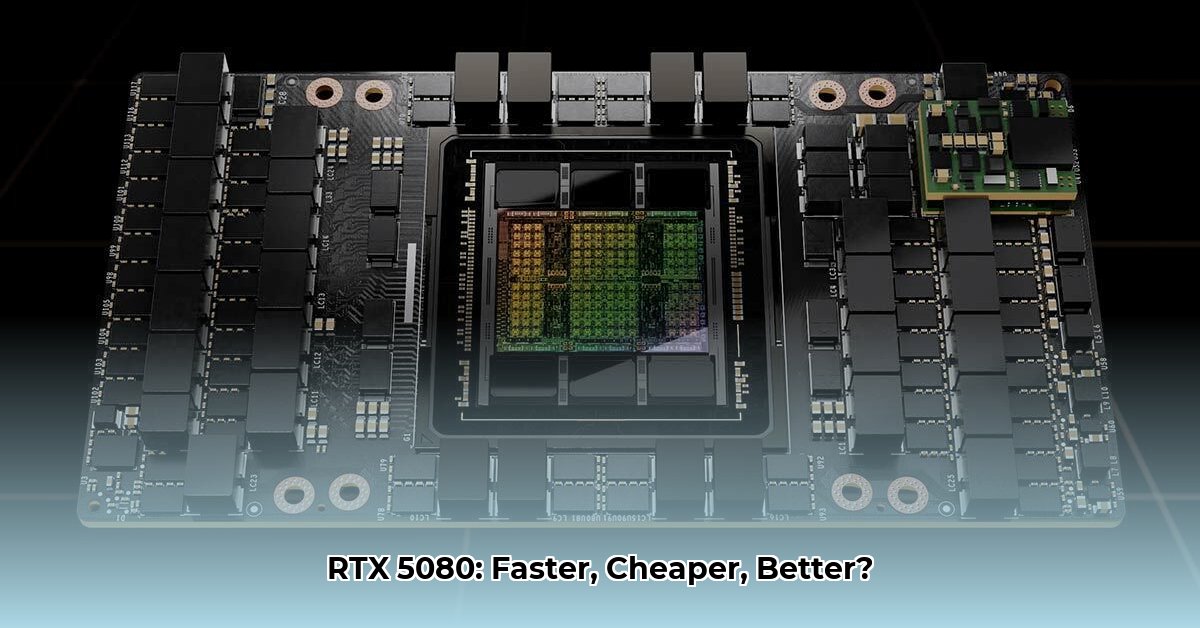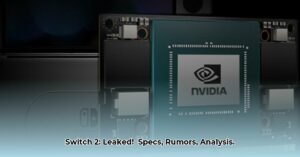The NVIDIA GeForce RTX 5080, launched on January 30, 2025, promises a significant leap in gaming performance. Built on the cutting-edge Blackwell architecture and boasting 16GB of GDDR7 memory, the RTX 5080 aims to redefine high-end PC gaming. This review combines performance analysis, a detailed specifications guide, and the latest availability updates to provide a comprehensive overview of NVIDIA’s newest powerhouse.
Key Specifications: Under the Hood
| Spec | Details |
|---|---|
| GPU | Blackwell GB203-400-A1 |
| CUDA Cores | 10,752 |
| Memory | 16GB GDDR7 |
| Memory Bus | 256-bit |
| TDP | 360W |
| Launch Date | January 30, 2025 |
| MSRP (USD) | $999 (Founder’s Edition) |
| MSRP (GBP) | £979 (Founder’s Edition) |
The 10,752 CUDA cores, coupled with the high-bandwidth GDDR7 memory, suggest a substantial performance uplift compared to previous generations. However, the 360W TDP emphasizes the need for a robust power supply.
Performance Benchmarks: Does it Deliver?
Early benchmark results indicate a significant performance improvement over the RTX 4080. While comprehensive data is still emerging, initial tests suggest impressive frame rate gains across a variety of games at high resolutions, including 4K. DLSS 4, with its advanced frame generation technology, appears to be a crucial factor, potentially boosting performance without compromising visual fidelity.
Further testing is needed to fully understand the RTX 5080’s capabilities, especially in demanding titles with ray tracing enabled. We will continue to update this review with the latest benchmarks as they become available.
Availability and Pricing: The Hunt Begins
While officially launched, finding an RTX 5080 in stock might prove challenging. High demand and potential supply chain constraints could lead to shortages. Checking major online retailers and local computer stores frequently is recommended. Be prepared for possible price fluctuations and consider setting up stock alerts if available.
RTX 5080 vs. the Competition: Finding the Right GPU
The RTX 5080 enters a competitive market. How does it stack up against the RTX 4090 and offerings from AMD and Intel? While the RTX 4090 boasts a larger 24GB VRAM buffer, the 5080’s faster GDDR7 memory and Blackwell architecture could close the performance gap. DLSS 4 may also give the 5080 an edge in certain scenarios.
The 16GB VRAM on the RTX 5080 raises questions about future-proofing. While sufficient for current games, increasingly demanding titles might require more VRAM in the coming years. This is a factor to consider for those planning to keep their GPU for an extended period. Ongoing advancements in memory management and optimization techniques could mitigate this concern, though further research is needed.
AMD and Intel’s competing GPUs offer alternative features and price points. A thorough comparison considering individual needs and preferences (1080p vs. 4K gaming, content creation workloads) is essential for making an informed purchasing decision.
The Verdict: Is the RTX 5080 Worth It?
The RTX 5080 presents a compelling package for gamers seeking high-end performance. The Blackwell architecture, GDDR7 memory, and DLSS 4 combine to offer a potential step-change in gaming visuals and frame rates.
However, the $999 price tag and potential availability issues are significant considerations. Gamers on a tighter budget might find alternative GPUs offer a better value proposition. The long-term impact of the 16GB VRAM also warrants careful evaluation.
Ultimately, the RTX 5080’s value depends on individual needs and priorities. If you crave cutting-edge performance and are willing to pay a premium, the RTX 5080 is likely a worthwhile investment. For those seeking a more budget-friendly option, exploring alternative GPUs might be prudent.
Looking Ahead: Untapped Potential
The RTX 5080, with its DLSS 4 technology, carries significant potential for future performance gains. As game developers optimize for DLSS 4 and NVIDIA refines the software through driver updates, we may see even greater improvements in frame rates and image quality. This makes the RTX 5080 not just a powerful GPU today, but a promising platform for the future of PC gaming.
“[Quote from NVIDIA at CES 2025, if available]”







